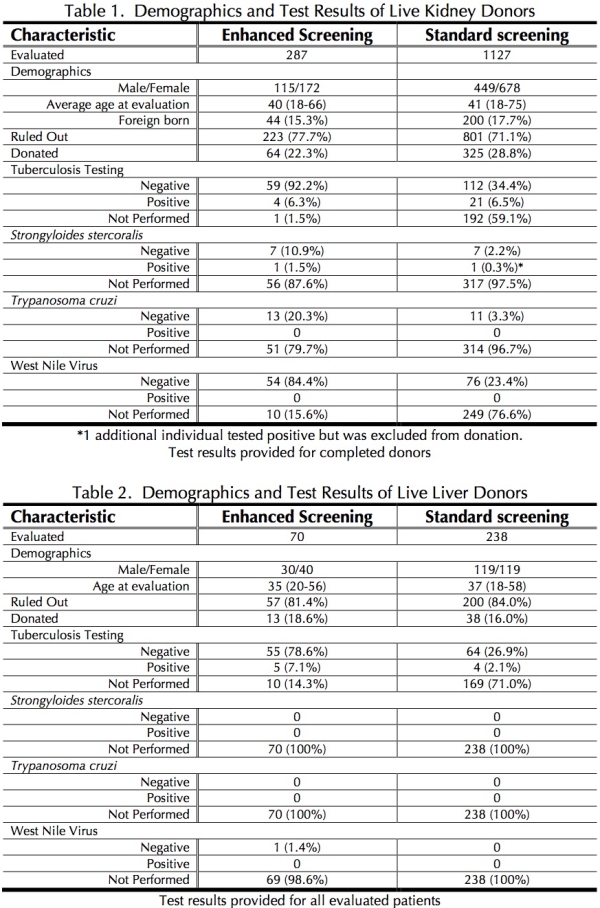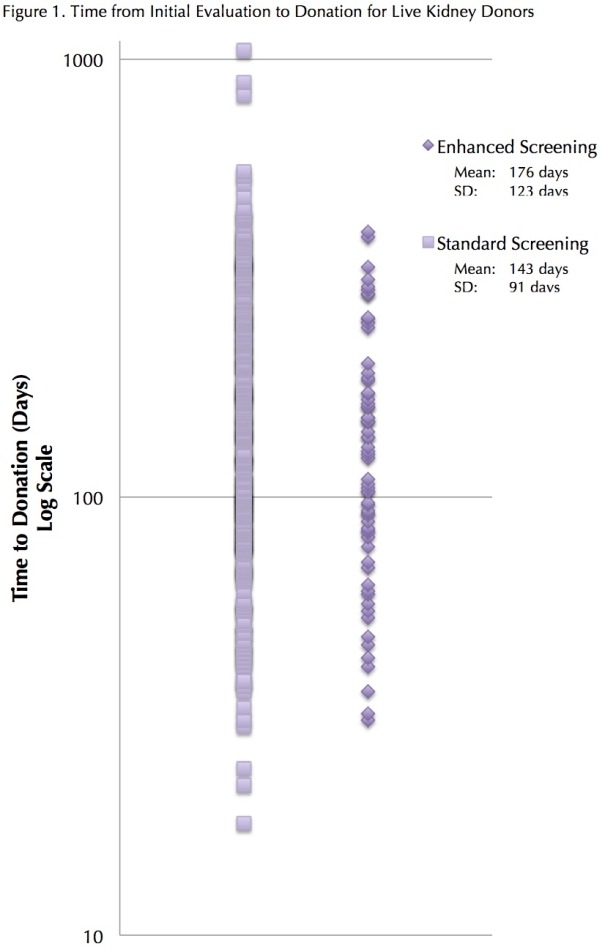Utility and Outcomes of Expanded Screening Among Live Solid Organ Donors
Organ Transplantation and Infectious Diseases, Northwestern University, Chicago.
Meeting: 2015 American Transplant Congress
Abstract number: C150
Session Information
Session Name: Poster Session C: Living Donor Issues 2
Session Type: Poster Session
Date: Monday, May 4, 2015
Session Time: 5:30pm-6:30pm
 Presentation Time: 5:30pm-6:30pm
Presentation Time: 5:30pm-6:30pm
Location: Exhibit Hall E
Background: The Organ Procurement Transplant Network (OPTN) now requires enhanced screening of selected live donors for Trypanosoma cruzi, Strongyloides stercoralis, Tuberculosis (TB), and West Nile Virus (WNV). The yield and impact of this additional screening on the donation process has yet to be assessed.
Methods: Following IRB approval, the electronic medical records of all potential live kidney and liver donors evaluated at Northwestern Memorial Hospital between 2011 and 2013 were reviewed (approximately 1.5 years prior to (standard screening) and 0.5 year after (enhanced screening) implementation of enhanced live donor screening). Results of donor screening for S. stercoralis, WNV, TB, and T. cruzi were collected. For donors who completed the donation process, the length of time to donation (date of donation minus the date of initial evaluation) was calculated. Descriptive statistics and Student's T-test were calculated.
Results: More LKDs and LLDs had enhanced screening in the later study period (Table 1 and Table 2). The evaluation period was statistically shorter for donors who had enhanced screening than donors without enhanced screening (143 vs 176 days, p = 0.017; Figure 1).
Of the LKDs and LLDs who had a positive screening test for TB (+QGold or +PPD), 17 (63%) were foreign born and 3 (11%) had other known risk factors for TB. All patients who had a positive S. stercoralis screening serology were born outside the US (2 in Mexico, 1 in Honduras). No donor screened positive for Chagas disease or WNV.
Conclusions: Although the evaluated period of enhanced screening was short, it appears that enhanced screening had low yield and no significant lengthening of donor evaluation. Future work will attempt to study a longer period of enhanced screening as well as the impact of enhanced screening on the liver donation process.


To cite this abstract in AMA style:
Rosen A, Ho B, Ison M. Utility and Outcomes of Expanded Screening Among Live Solid Organ Donors [abstract]. Am J Transplant. 2015; 15 (suppl 3). https://atcmeetingabstracts.com/abstract/utility-and-outcomes-of-expanded-screening-among-live-solid-organ-donors/. Accessed December 26, 2025.« Back to 2015 American Transplant Congress
